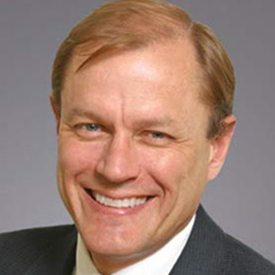CAISO will be inherently compromised in its role as an operator of a deeper Western market because of its conflicting responsibilities as balancing authority within that market, a group of entities that support SPP’s Markets+ over the ISO’s Extended Day-Ahead Market (EDAM) argue in their latest “issue alert.”
“An organized market that lacks a fully impartial market operator exposes its participants to shifts in hundreds of millions of dollars of economic value, shifts in reliability risk and shifts in environmental benefits because of the actions that the market operator takes or does not take,” the “joint authors” wrote in the Nov. 14 alert, the sixth in a series of seven such pieces touting the benefits of Markets+.
The contributors include Arizona Public Service, Chelan County PUD, Grant County PUD, Powerex, Public Service Company of Colorado, Salt River Project, Snohomish PUD, Tacoma Power, Tri-State Generation and Transmission Association and Tucson Electric Power — all of whom helped fund the Phase 1 development stage of Markets+.
The latest alert is possibly the most technically complex because it focuses on the multi-layered processes CAISO uses to manage operations in its real-time Western Energy Imbalance Market (WEIM), which has grown to cover more than 80% of load in the Western Interconnection since being launched in 2014.
“Over the past decade, in its [emphasis theirs] commingled roles as a balancing authority, transmission service provider and market operator, the California ISO has taken a range of actions and operational decisions for the benefit of the California ISO’s Balancing Authority Area and/or transmission service territory that significantly impact market outcomes for all participants,” the authors write.
In an email to RTO Insider, CAISO spokesperson Anne Gonzales said the ISO is “proud of the integrity and transparency with which we have managed our multiple responsibilities and the many trusting partnerships we have built with balancing authorities, policymakers and other stakeholders across the West” in operating the WEIM.
CAISO’s dual roles in the WEIM have become a recurring point of debate in the competition between Markets+ and the EDAM, particularly in discussions around the Bonneville Power Administration’s day-ahead market participation decision process. (See Rising Tensions Evident at BPA Day-ahead Markets Workshop.)
In the Nov. 14 alert, the joint authors zero in on four complaints from the Markets+ camp regarding CAISO’s operational practices in the WEIM.
Load Conformance
The first of those complaints deals with the WEIM market process known as “load bias” or “load conformance,” which allows a BA to adjust its demand forecast in the hour-ahead scheduling process (HASP) and 15-minute market (FMM) to better position itself for a real-time interval.
The alert contends that as a BA in the WEIM, CAISO has a history of making unusually large upward adjustments to its demand forecasts during morning and evening peak hours “to acquire flexible capacity through additional energy imports rather than explicitly purchasing flexible capacity itself.”
The authors say that while load conformance is available to all WEIM participants, CAISO’s “very large and systemic upward-load biasing” for its territory “appears to be unique.”
As an example, the alert points to a period during a July 2023 heat wave in which CAISO’s average load bias in the FMM during the evening peak was about 1,800 MW but reached as high as 5,000 MW.
“This is a continuation of an ongoing pattern of load biasing for the California ISO service area that first began in 2017,” the alert argues. It adds that “consistently intervening in the WEIM through manual operator adjustments that do not reflect actual system conditions” is likely to increase production costs and market prices in ways that don’t reflect marginal costs, while signaling that market design elements such as the WEIM’s Resource Sufficiency Evaluation (RSE) and flexible ramping product are inadequate to ensure reliability.
The authors also point to a previous statement by CAISO staff that load conformance is “significantly used” by the HASP and FMM “to position resources and secure additional intertie capacity.” But in a 2022 analysis that examined the issue, CAISO said it found “no evidence that load conformance causes a one-to-one increase” in WEIM transfers into the ISO.
It also found that use of load conformance does not improve CAISO’s ability to pass the WEIM bid range capacity and flexible ramping tests, but instead reduces the ISO’s ramp capability, making it more difficult to pass the flexible ramping test.
“The concern that load conformance could create more headroom on CAISO resources by unloading internal resources with increasing transfers was not validated,” the ISO said.
In an interview with RTO Insider, CAISO Director of Market Analysis and Forecasting Guillermo Bautista Alderete said the load conformance actions cited in the alert actually comes with a cost for the ISO.
Alderete said when CAISO applies load conformance in the HASP, FMM or real time, it effectively increases the ISO’s demand requirement.
“That has an effect that is going to dispatch supply up, and the consequence is that the prices are going to reflect that,” he said. “So when we clear the real-time market, the clearing prices are already reflecting the need — that we have asked for additional requirements to clear. It doesn’t come for free, because now the CAISO area — CAISO load — has to pay higher prices because of the consequence of having this load conformance,” which also translates into higher prices paid to exporters into the ISO.
WEIM Transfers
The alert’s second complaint refers to CAISO’s blocking of WEIM transfers “to support California’s reliability.” The alert points specifically to a period over July-November 2023 when the CAISO BAA blocked import transfers from the WEIM in the HASP and FMM — but not in real-time — during net peak load hours.
As the authors note, CAISO’s Department of Market Monitoring (DMM) later said “the transfer limitation had the intended effect of increasing hourly block imports into the CAISO area and decreasing hourly block exports out of the CAISO area to protect reliability during peak net load hours in late July through mid-August.”
The DMM also determined the practice “created a significant, systematic modeling difference between the 15-minute and 5-minute markets, which impacted market results in several ways,” including increasing congestion into the CAISO area from other WEIM areas in the FMM compared with the real-time market, lowering the WEIM’s FMM prices relative to real time in the Desert Southwest and reducing the amount of energy that could be scheduled out of the Southwest in the HASP and FMM.
“While causing adverse consequences across the market footprint, these California ISO operator actions may not have been effective at enhancing reliability in the California ISO’s service area, as DMM found that ‘[u]nder most conditions, it seems that limiting transfers would not provide significant reliability benefits, but would have negative market impacts,” the alert notes.
The joint authors expressed concern that the import limits continued even after initial reliability concerns of late July and early August had passed and by “a lack of transparency” that they were even occurring, saying the first mention by CAISO was in mid-September almost two months after they began.
In a May 2024 presentation to the CAISO Board of Governors and Western Energy Markets Governing Body, the ISO explained that the ISO started the limits after large volumes of WEIM transfers scheduled in the HASP began failing to materialize in real time.
Alderete said a “key piece of information that is typically neglected” is that CAISO was attempting to reduce its reliance on WEIM imports in response to the market behavior.
“We were limiting ourselves to not rely too much on the EIM transfers because from the operational point of view, we wanted to be as clear as possible [about] how much internal supply we could have available to meet our own needs. We were insulating ourselves — basically isolating ourselves — from the rest of the EIM market,” he said.
Alderete said the ISO ceased the practice in November 2023 after it fixed three market issues, including inaccurate display of dispatchable capability in the WEIM, scheduling and tagging processes that allowed participants to ignore export reduction and inconsistent treatment of intertie transactions among BA that increased congestion.
“Limiting the transfers is one of the tools that any balancing area participating in the market has, including … CAISO. We are not the first one to use it; we are not the only one using it,” he said.
‘Limited Transparency’
The alert reprises another common contention by Markets+ supporters: that CAISO can’t be trusted to fairly manage the WEIM’s Resource Sufficiency Evaluation (RSE), which is the market test run ahead of every delivery interval to ensure all participants are making enough capacity available to avoid leaning on the market to meet their energy needs.
They contend that WEIM participants have “limited transparency” into CAISO’s specific inputs and calculations when applying the RSE, which was “routinely failing to identify instances in which” CAISO’s own area didn’t have sufficient resources.
“Even in hours that the California ISO declared an energy emergency, such as during the August 2020 and September 2022 heat events, the RSE still frequently allowed the California ISO area to ‘pass’ the RSE,” the authors say.
This points to a larger problem with the RSE, according to the authors: that a resource-deficient WEIM participant is allowed to continue importing the amount of energy it was importing during a previous interval in which is passed the test, without facing an additional financial penalty. They say the rule is “uniquely beneficial” for CAISO because, unlike other WEIM entities, “it typically begins importing large quantities from the rest of the WEIM in the hours leading up to the afternoon peak, driven in part by the large quantity of upward load bias applied by CAISO operators.”
“This is very different from other WEIM entities that are often importing very little (or even exporting) immediately prior to an RSE failure. Those entities face much more significant limitations on their ability to access WEIM imports without financial penalty,” the alert says.
Alderete countered that RSE rules apply in a uniform way to every BA across the WEIM, including CAISO, and that the ISO has been “very transparent about the design features of that model” and has in recent years undertaken a series of stakeholder policy initiatives to refine the mechanism.
He also said it was “misleading” to contend CAISO faces no financial penalties for failing the RSE, adding that the ISO soon will publish an analysis showing how it did incur such penalties during the past summer.
Congestion Rent Debate Continues
The alert concludes with criticism of CAISO’s treatment of congestion revenue rights (CRR) in its market, a subject that became a kind of proxy for the debate between Markets+ and EDAM supporters after a January 2024 cold snap triggered energy emergency alerts in BAs throughout the Northwest because of supply shortages. (See NW Cold Snap Dispute Reflects Divisions over Western Markets.)
During that event, the authors note, CAISO collected high transmission congestion rents on power flowing across the Pacific AC Intertie (PACI), which is jointly operated by CAISO and entities in the Northwest, but distributed congestion revenues it collected only to its own participants and CRR holders.
“[T]he coordinated physical capability of the multi-state transfer path is modeled by the California ISO using a ‘scheduling constraint’ that is applied as a limitation on the quantity of energy that can be imported into or exported out of California,” the alert states. “California ISO’s choice to model the coordinated limit of the overall multi-state transfer path as a limitation ‘inside’ the California ISO ensures the congestion revenue associated with the overall multi-state path is collected and allocated back to [sic] exclusively to customers of the California ISO.”
The authors say a “similar dynamic” of rent allocation has played out during summer heat waves when CAISO has imported power from the Northwest.
CAISO contested the Markets+ supporters’ assessment practices during a CRR “myth-busting” presentation to the WEIM’s Regional Issues Forum in September. (See CAISO Seeks to Dispel CRR ‘Myths’ Around January Cold Snap.)
And in his interview with RTO Insider, Alderete repeated an argument CAISO has raised previously: that the ISO is the only day-ahead market that provides a market solution to manage congestion, which occurs only south of the “constraint.”
“There is no price signal for doing congestion management in the other northern part of the constraint. That is the problem when you don’t have a market on the other side. There is no mechanism to be able to dispatch, to move resources, to [do] price congestion. All that is basically manually done,” he said.
The joint authors’ seventh and final issue alert will cover “durable customer benefits.”


